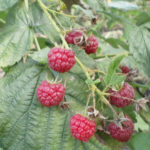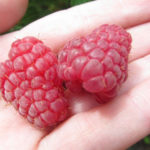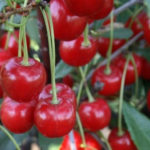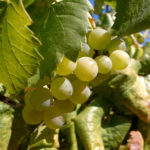Strawberry variety Vima Ksima
Vima Ksima is a mid-late non-repairable variety of garden strawberries (strawberries) for universal use. Bred by specialists of the Dutch company Vissers Aardbeiplanten B. V. in 1981. In European countries, the variety has been known for a long time, is actively used by farmers and gardeners, and does not lose its popularity. In Russia, this strawberry appeared relatively recently, the official distribution began only in the 2000s. So, in 2006, an application was filed for the inclusion of the variety in the State Register of Breeding Achievements of the Russian Federation. Seven years later, after passing the tests, our heroine was added to the register with admission to growing in the Central region (Bryansk, Smolensk, Tula, Moscow, Ryazan, Ivanovskaya, Vladimirskaya, Kaluga regions). Vima Ksima is famous for its large fruits, good yield, excellent taste of berries and their excellent presentation. It is also characterized by winter hardiness, thanks to which it is promising for growing in regions with a cold climate.
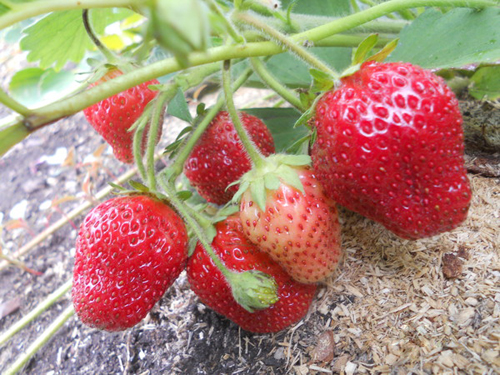
The plant is powerful, semi-spreading, abundantly leafy. The whiskers are moderate, the whiskers are thick, green in color with a strong anthocyanin tint. The leaves are large, concave, slightly wrinkled and medium-silvery, dark green in color. The denticles of the edges of the sheet plate are rounded. The middle lobe of the leaf has an oval-rhombic shape. The petiole of the middle leaf lobe is longer than that of the lateral ones. The petiole is thick, with medium pubescence, the hairs are not appressed. The flowers of the variety are bisexual, large, untwisted, white in color. The inflorescence consists of many flowers, while it is very compact. Strawberry flower stalks are quite short, located at the level of the leaves, at the first wave of fruiting they hold the harvest well, in subsequent ones they tend to lie on the ground under the weight of large fruits.
Vima Xima forms really large berries of a round-conical shape, without a neck, the largest specimens can be comb-shaped. The peel is a rich, bright red; when the fruit is fully ripe, it turns dark red. Achenes are deeply impressed. The pulp is red, juicy, fleshy and quite dense, but not firm - it allows you to safely transport berries, while not spoiling consumer qualities, there is no crunch when biting. The fruits have a wonderful, pronounced strawberry aroma.
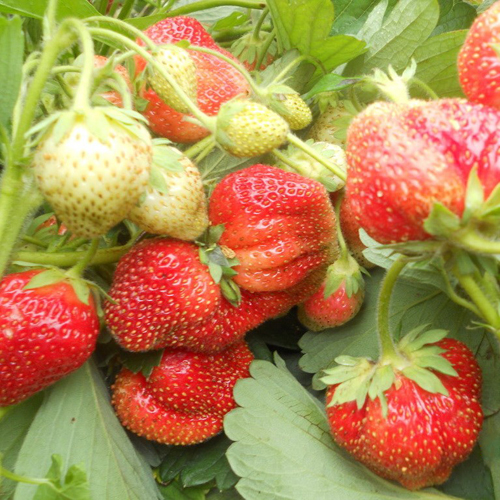
The taste of the variety is excellent. The taste is multifaceted, very sweet, with a subtle hint of sourness, which only emphasizes the sweetness. The fruits have a high sugar content - 10%. It is worth saying that the opinions of gardeners about the taste of strawberries differ. So, some praise and admire him very much, while others say that he is not something outstanding - an ordinary strawberry. However, we note that still those who like Vima Ksima in terms of taste are much more. The berries are versatile in use, suitable both for fresh consumption and for processing and freezing. They tolerate transportation and short-term storage very well, making the variety very attractive to grow for fresh produce on the market.
The average weight of berries in the season is 25-30 grams, but specimens are not uncommon and much larger, weighing up to 90 grams, and sometimes even more. In general, the size of the fruits depends on the growing technology - with intensive agricultural technology, really giants will form on the bushes. Also, the mass of strawberries depends on the age of the plants. So, in the third year after planting, the average weight of fruits can reach 90 grams. Thus, we can safely say that Vima Ksima, in terms of its large size, is comparable to the well-known to many Gigantella Maxim, and sometimes surpasses it in this regard.And since we mentioned Gigantella, we can say this - in terms of maturation, she is almost identical to our heroine, and it is quite possible to consider Xima as a very good replacement for this "giant" variety. From her you will receive all the same huge fruits, but much tastier than that of Gigantella.

In terms of yield, our heroine also does not lag behind her rival. According to the State Register of Breeding Achievements of the Russian Federation, the strawberry yield during state tests was 145 c / ha. But this is far from the limit! As already mentioned, Vima Ksima responds well to intensive agricultural technology, so it is quite possible to get more than 1 kg of berries from a bush. Some sources report very decent results in the open field - up to 171 c / ha. In general, it should be said that varieties from the "Vima" group (Vima Zanta, W. Kimberley, V. Rina and others) have proven themselves very well as commercial ones, and are very promising for cultivation specifically for the purpose of sale. As for the interests of ordinary gardeners, you can be sure that Vima Ksima will not disappoint you. With moderate agricultural technology, it also shows excellent results, the figure of 500 grams per bush is quite real. Again, this is far from the limit, it all depends on how much effort you spend on growing.
The variety ripens mid-late, 10-14 days later than the reference Elsanta. The first collection is carried out approximately in the second or third decade of July. Ripening occurs very amicably, besides, strawberries quickly give up the entire harvest, which is very convenient - the harvest is fruitful and in a short time. Gardeners also note that the already ripe fruits of Vima Ksim calmly "wait" on the collection bush, do not rot. True, insects, especially slugs, can get ahead of you. In a word, it is better not to delay the collection. Our heroine is distinguished by stable fruiting, the berries remain large throughout the season, you will never see little things on the bushes, with the right agricultural technology, of course.

According to the State Register of Plants of the Russian Federation, the variety was damaged by diseases and pests no more often than other standard varieties. According to gardeners, strawberries are very resistant to a wide variety of diseases, especially fungal ones, they perfectly resist spotting. As for pests, gardeners noted that absolutely all "residents" of the site love Vim Ksim berries. These are not only strawberry mites and weevils, but also ants, wasps, birds and other "neighbors". Very tasty, I guess! In general, it should be said that high-quality timely prevention will have an extremely positive effect on plants. Let's not forget that the variety is commercial, and therefore chemical treatments will be very useful to it. In principle, gardeners can do well with folk remedies.
The State Register reports that strawberries are winter-hardy, but other sources still recommend taking care of a good shelter for plants for the winter. Bushes can suffer especially badly during periods of little snow, therefore, it is clearly not worth neglecting covering materials. The variety is moderately resistant to heat, it is highly desirable to provide shading for the plantings. It is worth noting that the berries are not baked in the sun, and the plants themselves are not particularly affected in hot seasons, but the yield and size of the berries may decrease. The variety does not tolerate drought well, the taste of the fruits and their weight, and hence the yield, deteriorate. Strawberries are moisture-loving, but you should not overmoisten the soil - the risk of fungal diseases will increase, the berries may rot, and the taste may suffer. By the way, in rainy seasons this can be a problem - a sickly part of the crop can rot, so you should take all the necessary measures to protect it.
In terms of agricultural technology, Vima Ksima is absolutely standard, does not require any special techniques, but needs high-quality, timely basic care measures. Loosening the soil, weeding, preventive treatments for diseases and pests, watering and fertilizing - that's the whole agrotechnical set. To achieve the best yield, you should be especially painstaking about irrigation, the best option is to install a drip irrigation system. Maintaining an optimal moisture level will have a very positive effect on the quantity and quality of the crop. With top dressing, the situation is quite simple - the more you "feed" the strawberries, the more response you will get from them, in reasonable quantities, of course.
Another agrotechnical nuance that should be paid attention to is that Vima Ksima reacts extremely negatively to excessive thickening. The bushes are very powerful, so they should be planted at a distance of at least 40 cm.With regard to longevity, it should be said that commercial varieties are usually used no more than two years. In general, our heroine can bear fruit at a high level for about 4-5 years, and for gardeners this is quite realistic, but for farmers it is no longer so unambiguous. With the age of plants, their resistance to diseases decreases, and often high costs are required for preparations for treatments. In their homeland, strawberries are usually grown in a two-year culture, but how appropriate such a scheme is in our conditions is up to you.
Let's summarize a little. Vima Xima is a very good variety that meets the requirements of both entrepreneurial farmers and ordinary gardeners. It is high-yielding, has good immunity, is famous for its taste and excellent presentation of berries. Strawberries are also relatively unpretentious in care - in comparison with other varieties, they cannot be called sissy. Of course, it is more "sharpened" for growing for commercial purposes, therefore it still requires sufficient attention to itself and does not forgive serious agricultural mistakes.
What about the disadvantages? They are pretty relative. Some gardeners do not like the taste - too mediocre, they want something incredible. However, it is worth noting that Vima Xima has a very good balance of taste and marketability, which is often not the case with other commercial varieties. Another disadvantage is the low ability to adapt to different climatic conditions. After analyzing the reviews of gardeners, one can understand that not in every region the variety can take root and show good results. But it is clearly worth trying to settle this strawberry on your site.

